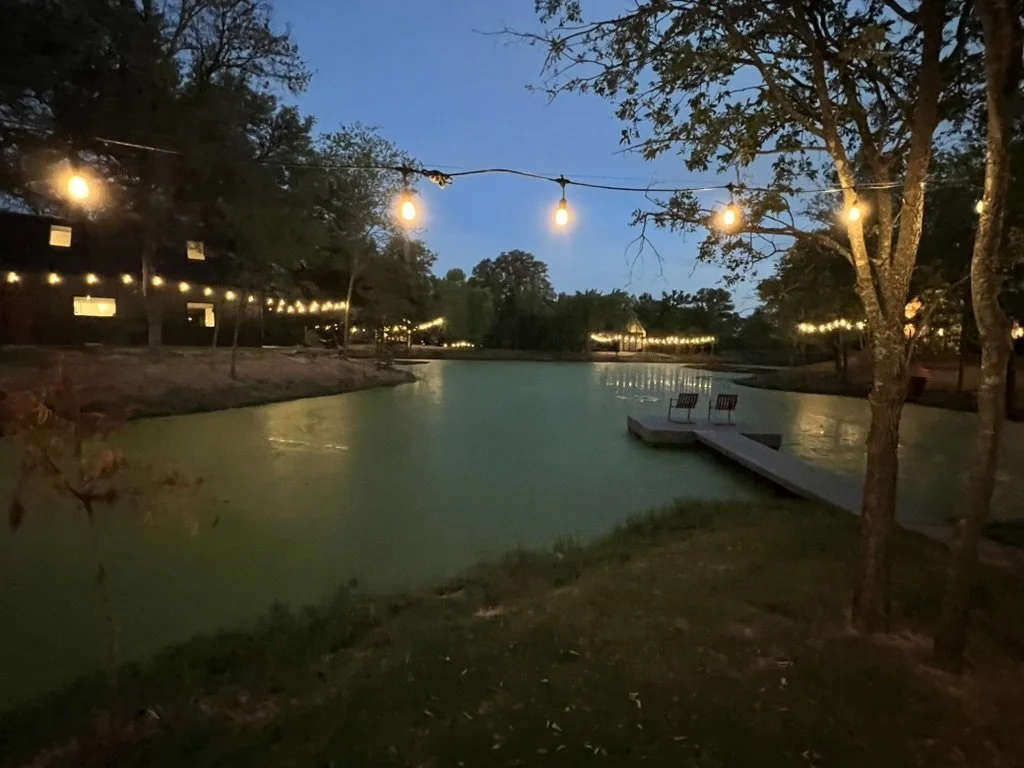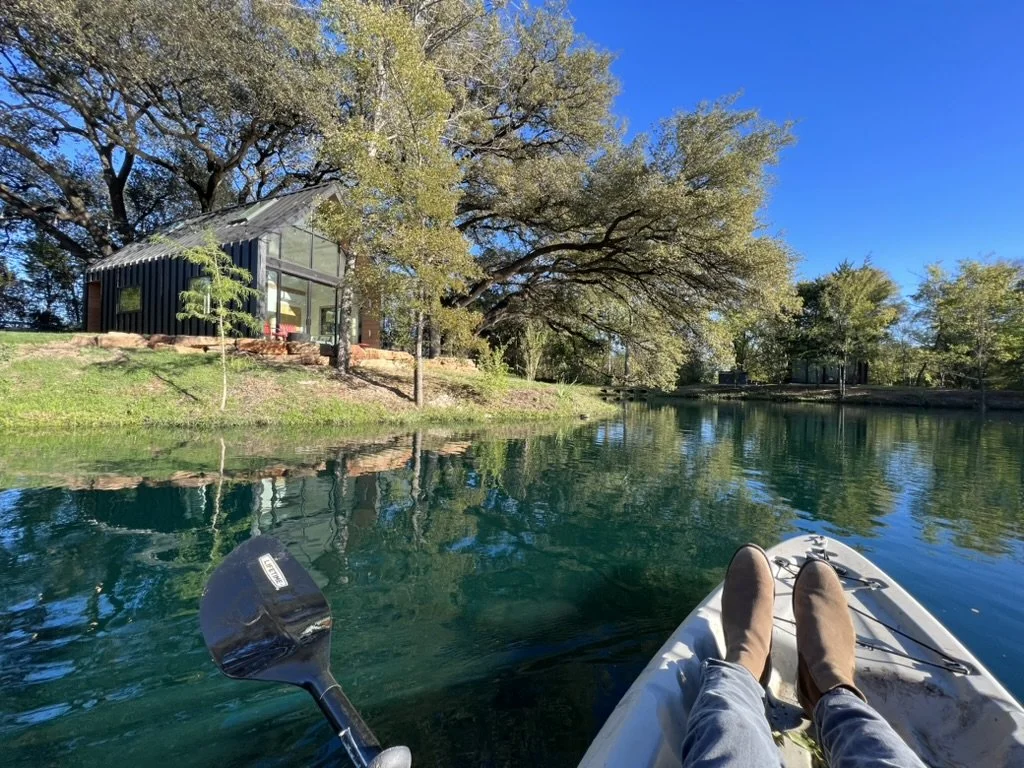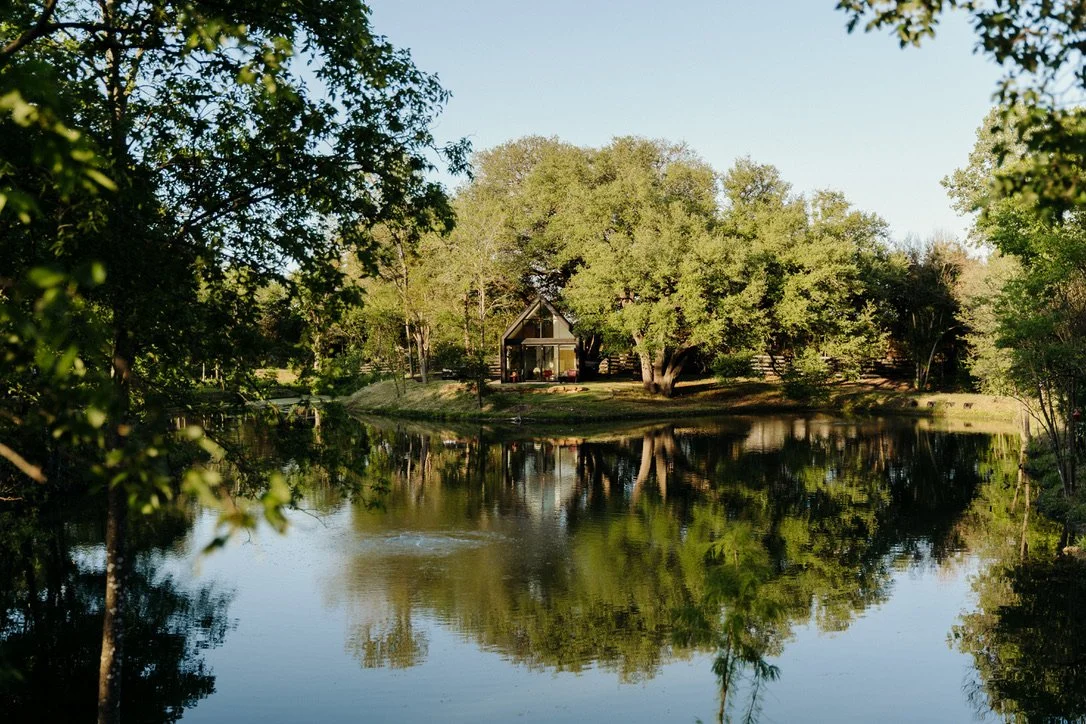Water Makes Dirt Valuable
the lake disaster
When we first found it, the “lake” at Live Oak Lake was nothing more than a muddy little pond, hidden in brush and swampy trees. But I just knew it could be beautiful. And I fell in love with it.
A few thousand dollars, a plan, and a lot of hard work later — we redeemed it.
By month five, Live Oak Lake was a rocket ship. Every metric cooking. Nonstop occupancy, weekly rate increases, Instagram domination.
And the lake was the centerpiece. It showed up in every reel, influencer feature, and guest review.
We’d battled algae and finally cracked the code.
Then came a big win: YouTuber Shelby Church was coming to visit and make a video. 1.7 million loyal subscribers were about to see our little oasis! A dream feature.
We spent days plucking every weed, mowing grass, and making sure every detail inside and out was sparkling.
Then disaster struck.
I drove through the gate the day before Shelby arrived and parked at the commons area. I looked at the lake — and froze.
It was gone.
In its place: a flat, matte-green slick. It looked like a reservoir of vomit. (Forgive the image, but it was bad).
Closer inspection revealed it wasn’t algae. A completely new enemy had arrayed itself in full force overnight: duckweed. I fretted all day. Raked it, sprayed it, even tried poison. Nothing worked.
That night there was only one thing left to do. I prayed.
Next morning, the lake was clear as glass.
A strong wind had come in overnight and blown across the surface pushing the duckweed into one corner. Relief doesn’t do justice to how I felt.
God answers prayers!
what to do & not do
Today, I want to share a few practical things I’ve learned about ponds and natural water features:
design
- No part of your pond should be shallower than 3 feet. Shallow areas breed algae.
- Avoid straight lines or boxy shapes. The more distinctive and irregular the shape (there are rules to follow, though!), the bigger and more natural and special it will feel. Islands are fun, too!
- Cut trees (except cypress) within 3-6 feet of the water’s edge. A mistake I made when we started was leaving a ton of smaller trees in the footprint of the pond after we dug it out. When the pond filled, they flooded, were on the way to dying, and generally looked terrible. We ended up draining much of the water and cutting them.
ecosystem
- Stagnant water = problems. Add a fountain, waterfall, or bottom aerator to improve oxygen levels and circulation. The more the merrier. We ran 3 invisible heads from a 1/2 hp pump.
- A little bit of black pond dye helps with reflection, and helps to suppress algae blooms from ever getting going.
- Fish are a double benefit. Can be fished as an added experience, and they help maintain healthy, weed-free water (when balanced with beneficial bacteria). Start with minnows and smaller bait fish, then add bass, crappie, etc. But don’t overstock!
- Skim leaves and debris often — algae feeds on organic matter.
- A bit of shade (from tree canopies like the live oak tree near the edge of ours, and/or non-invasive pond lilies) can cool water and help reduce algae growth.
final thoughts
I’ve said it before: landscaping is the highest-leverage design and construction investment you can make.
And water is at the top of that list.
If you have the chance to dig a pond — or improve one — do it. It’s a wonderful gift to your guests, and an incredible value multiplier.
Just remember: it’s not a one-and-done project.
Like anything beautiful, you’ve got to invest time, attention, and love. Water makes dirt valuable — but only if you keep showing up to steward it.
As always, thanks for reading.



